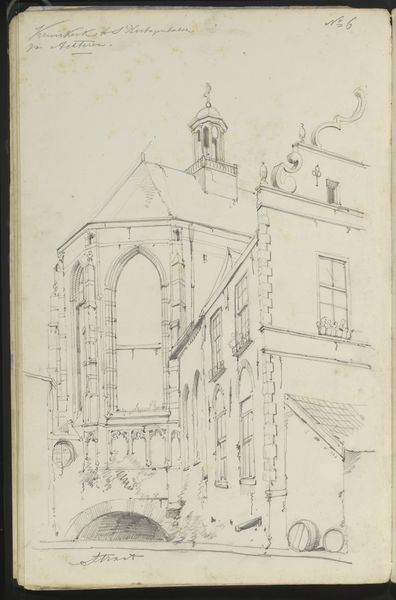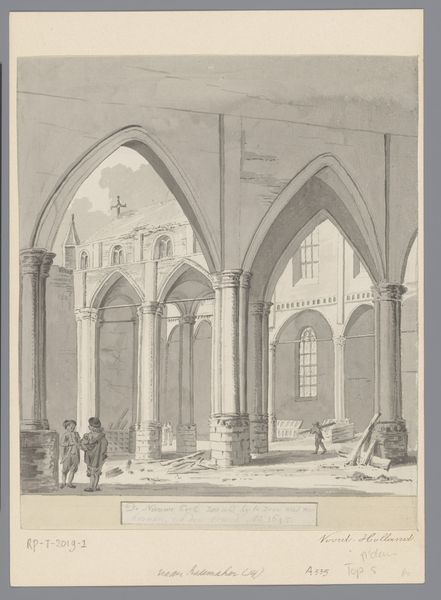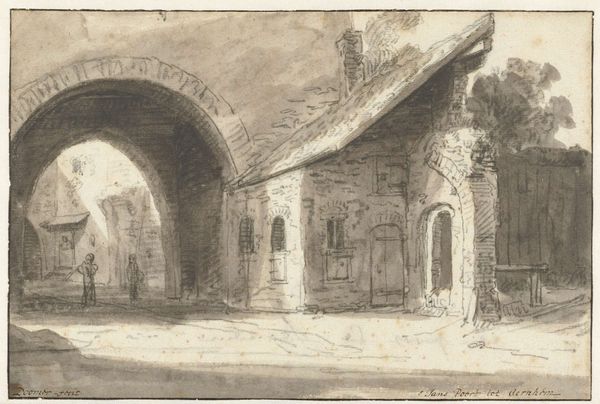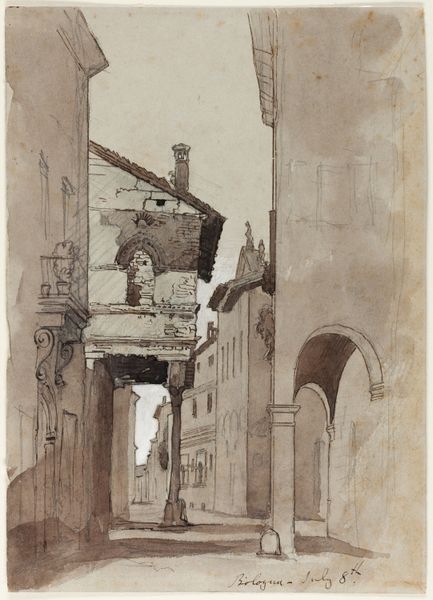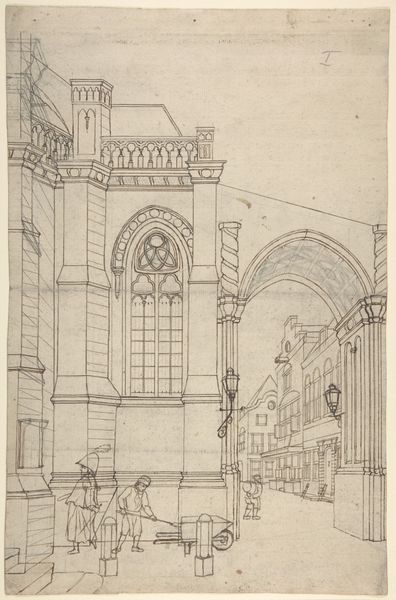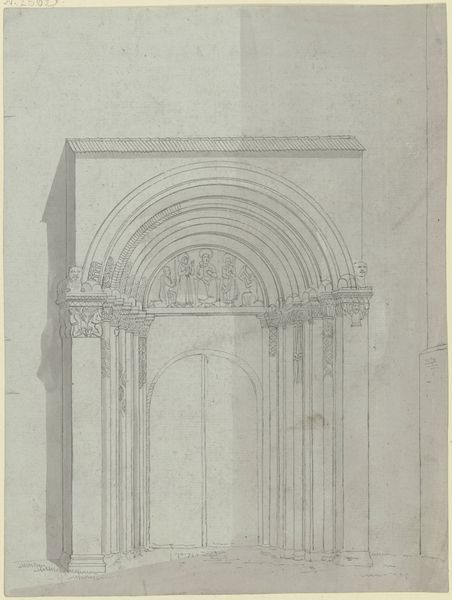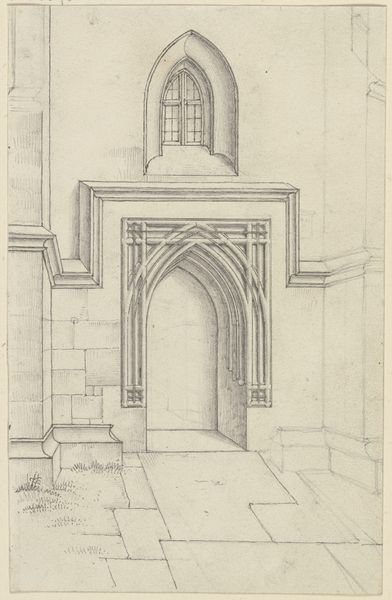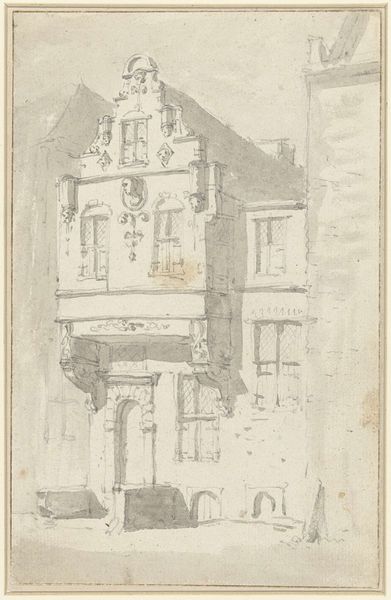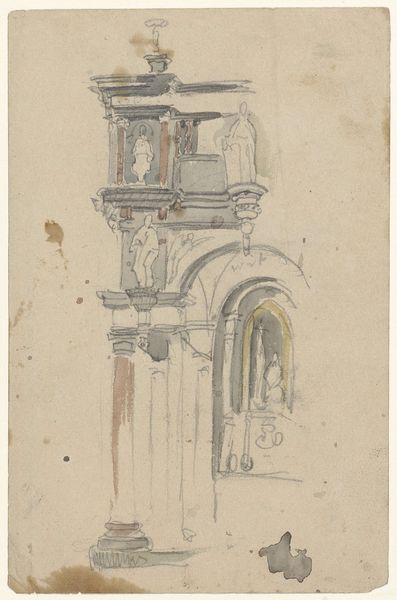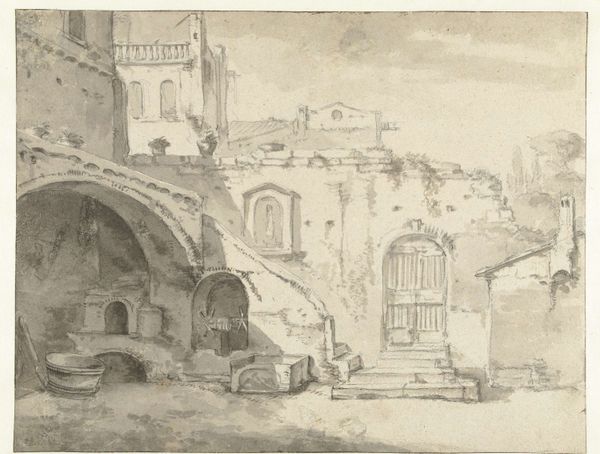
drawing, paper, ink, architecture
#
architectural sketch
#
landscape illustration sketch
#
drawing
#
aged paper
#
quirky sketch
#
baroque
#
sketch book
#
landscape
#
perspective
#
paper
#
personal sketchbook
#
ink
#
sketchwork
#
chiaroscuro
#
architecture drawing
#
sketchbook drawing
#
cityscape
#
storyboard and sketchbook work
#
architecture
Dimensions: height 296 mm, width 185 mm
Copyright: Rijks Museum: Open Domain
Curator: Welcome. Before us, we have "Interieur van een vervallen kerk," or "Interior of a Ruined Church," a drawing rendered in ink on paper by Gerbrand van den Eeckhout, dating roughly from 1645 to 1650. It’s currently held in the collection of the Rijksmuseum. Editor: Gosh, what a moody scene. It's immediately melancholic, this skeletal framework of a once-grand building. The light feels… haunted, almost, filtering through those broken arches. Curator: Indeed. Eeckhout employs a keen understanding of perspective to emphasize the scale and depth of the decay. Observe the masterful use of chiaroscuro, the contrast of light and shadow, that amplifies the dramatic effect. It’s interesting how these elements intersect, creating an aesthetic experience that invites philosophical consideration. Editor: Totally. It also kinda feels like time stopped, right? The broken architecture speaks volumes, even if they're whispers. The eye traces over each fracture and crumbling piece, like studying a history etched into stone. You'd swear the shadows dance, telling forgotten stories. Curator: The barest bones of structure speak. Precisely. It resonates deeply with notions of impermanence and the transient nature of human endeavor. Notice, also, how the delicate linework and the washes of ink, almost like captured memories on aged paper. Eeckhout skillfully portrays vulnerability and grandeur side by side. Editor: You almost wanna invent backstories for every fallen brick, don't you? The absence of life only enhances the spectral quality. I see so much in the spaces, the absence and negative spaces hinting about what used to stand tall in it. It's both fascinating and somber to explore what has endured. Curator: His treatment underscores how ruin may not only denote demolition but also evoke beauty, reflection and even transcendence. Its complex symbolism surely extends well past any objective document. Editor: Right? A testament to things changing… decaying to ultimately transform into beauty. I’m feeling inspired, almost reverent. Curator: Indeed. The dialectic provides fertile territory to expand the viewer’s subjective encounter with its tangible elements. Editor: That just about captures it. Thanks.
Comments
No comments
Be the first to comment and join the conversation on the ultimate creative platform.
